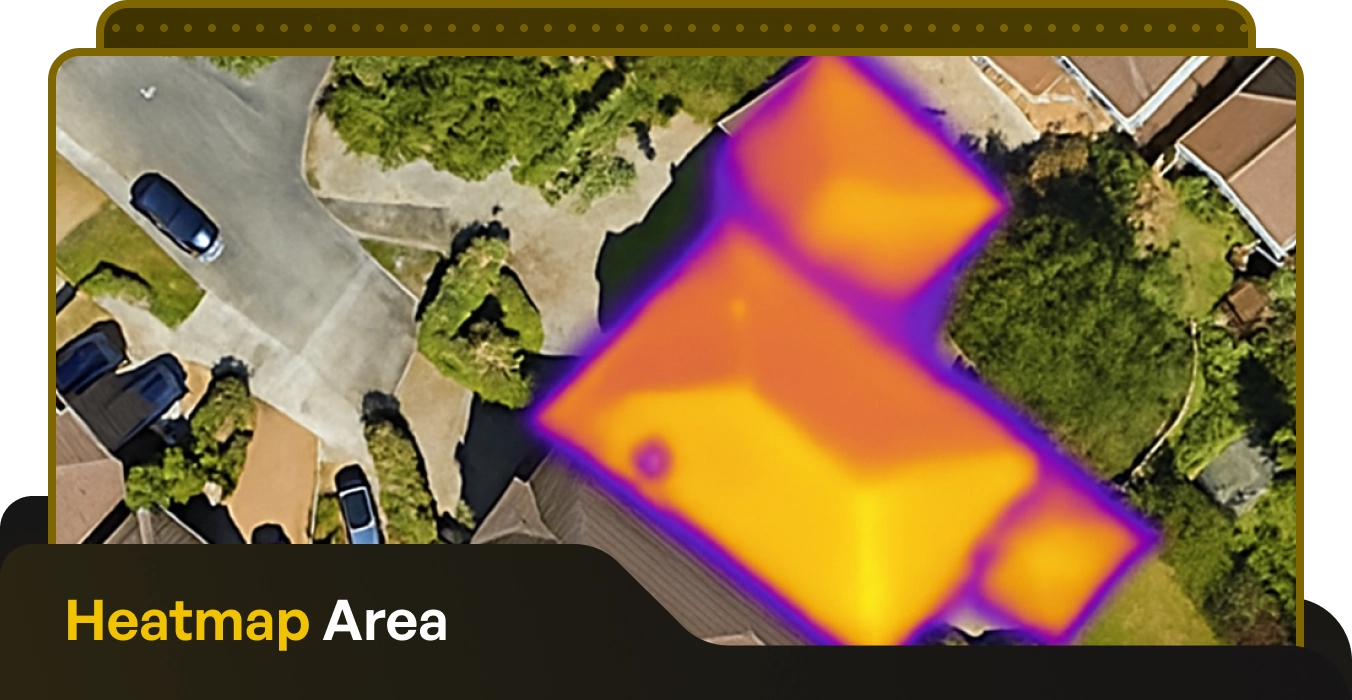Table of Contents
Solar PV vs Solar Thermal

Written by: Briain Kelly
Published: September 25, 2023
Last updated: October 9, 2025
Reading time: 5 mins
There are two main types of solar power systems which you can install on your property, solar photovoltaic (PV) panels, or solar thermal collectors.
These provide different types of energy for your home, come at different costs, and will net you different savings over time. So which then is the best option for someone looking at getting a solar system installed today.
Well, let’s start by looking at what the two different types of technology are for.
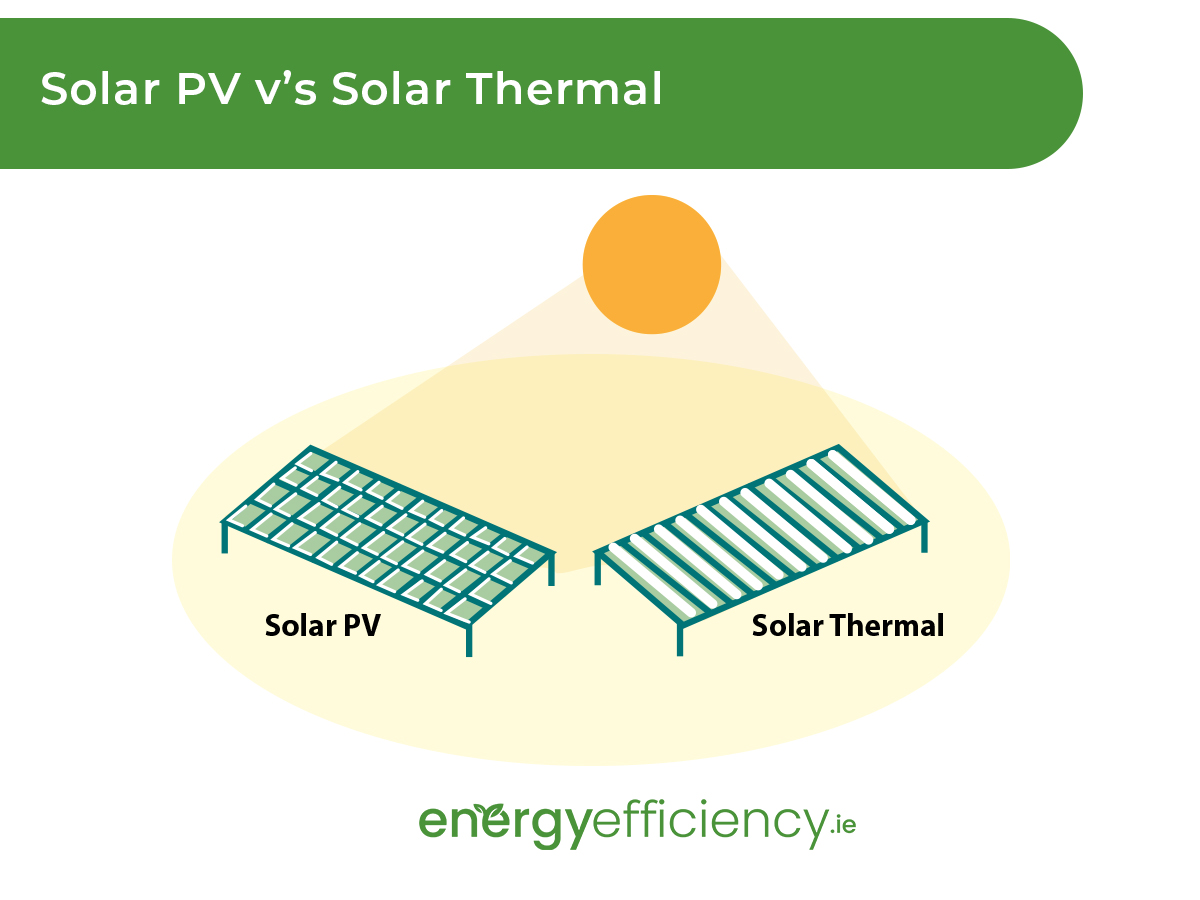
Solar PV Panels
Solar Photovoltaic Panels convert sunlight into electricity. The panels are made up of photovoltaic cells of a material, usually crystal, which converts photons into electricity through the photovoltaic effect.
The electric current generated by solar panels is in the form of direct current (DC), which has to be converted into alternating current (AC) before it can be used in your home. This is done by an Inverter, either at the end of the string of panels wired together, or via microinverters attached to each individual panel.
Elements in a solar PV system can include:
- Solar Panels- The photovoltaic panels which generate electric current from sunlight, the most important part of the array.
- Inverter – Which changes the DC electricity generated by your solar panels to AC which is usable in household appliances.
- Battery – An optional extra for storing excess electricity created by your panels at peak output, so that it can be used later.
- Charge Controller – Regulates the flow of electricity from solar panels to the battery so as to prevent overcharging.
- Power Diverter – Sends surplus electricity from your solar panels to the immersion in order to produce hot water.
- Monitoring System – A sensor array and display system that lets you monitor the output and health of your solar panels.
Solar Thermal Collectors
Solar thermal collectors trap heat from sunlight, and then channel that heat to a hot water cylinder. This is in contrast with burning fossil fuels such as oil or gas to heat a boiler.
The solar collectors absorb sunlight, which is then used to heat water or a heat transfer fluid, and bring that down to your hot water cylinder for it to be used.
There are two main types of technology used for solar thermal systems: Flat Plate Collectors and Evacuated Tube Collectors.
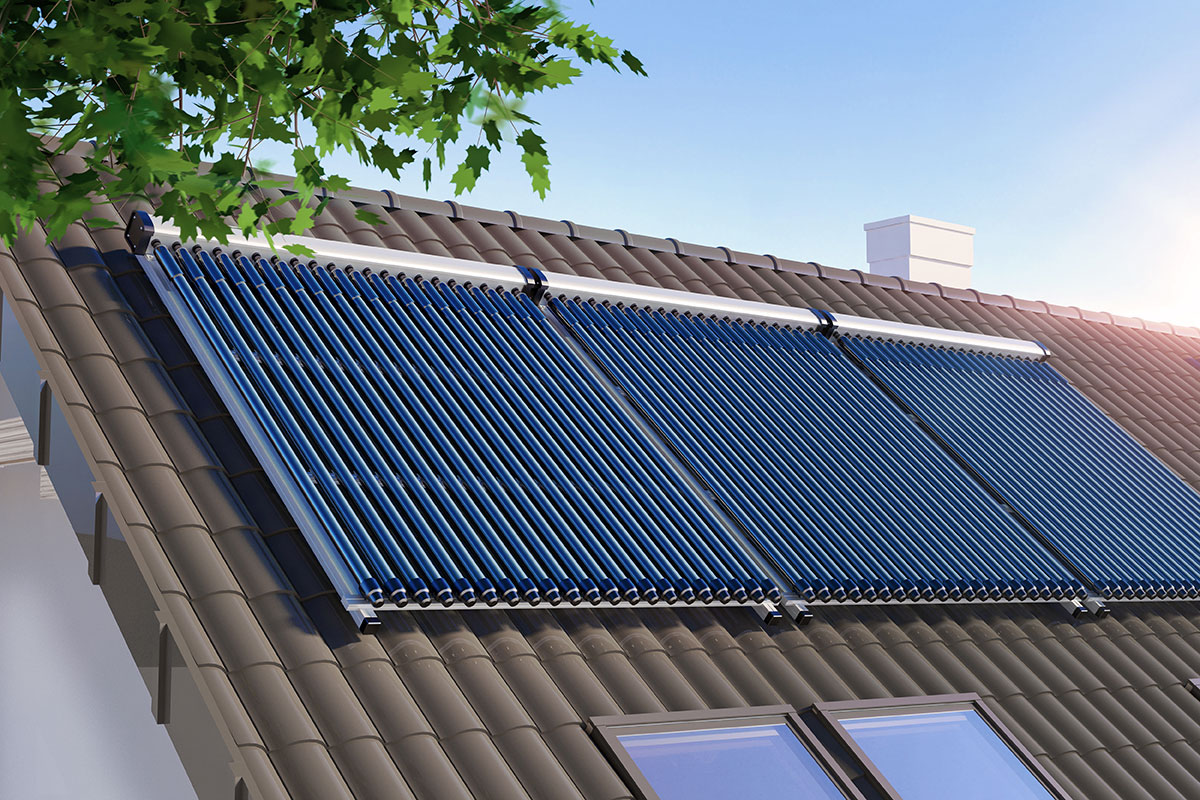
Flat Plate Collectors
Panels of black metal encased in a frame, and with a plastic of glass cover over them, and surrounded by insulation to reduce heat loss.
Either water or a heat transfer fluid is circulated through pipes underneath the metal plate and down to the hot water tank.
Evacuated Tube Collectors
Evacuated tube solar panels consist of glass tubes which have had the air evacuated from them to minimise the loss of heat. Inside of this is a metal pipe with an aluminium fin known as the absorber, which absorbs and transfers the heat into the fluid contained within the inner pipe.
The heat transfer fluid is then circulated to your hot water storage tank, where it heats the water via a coil.
Of these two types, Evacuated Tube Collectors are about 30% more efficient, so they take up less space on your roof. They are also considerably lighter than Flat Plate Collectors.
Which Should I Get
There are a multitude of pros and cons for the two different systems to weigh up when making your choice between solar PV and solar thermal.
Solar PV
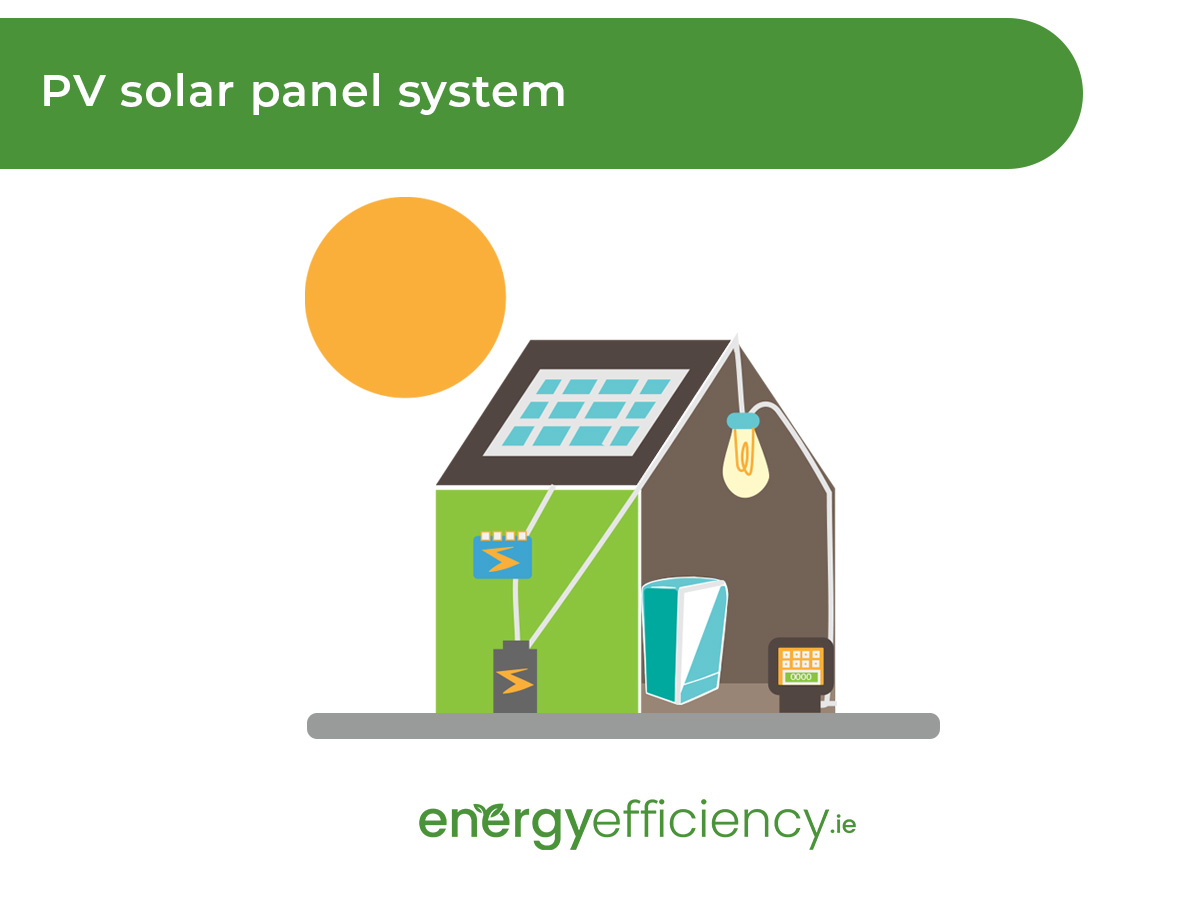
Pros
- More Versatile – Solar PV panels which produce electricity are capable of far more cost saving functions than solar thermal. They cut down on your direct electricity usage, and can be used to charge electric vehicles. Solar PV can also be used to produce hot water if you have a power diverter to your immersion.
- Reduced Electricity Bills – Having a solar PV system installed on your property can dramatically cut down the cost of your electricity bills by making free power from the sun.
- Long Lasting – Solar PV panels can last for decades, potentially continuing to produce considerable amounts of electricity after their official lifespan of 25 – 30 years. The payback period for the cost of the panels is in the region of 7 – 10 years, leaving you with decades of free electricity afterwards.
- Longer Warranty – While both types of system have official estimated lifespans of 25 – 30 years, solar PV panels tend to have far longer warranty periods, usually 25 years, than solar thermal panels’ 5-10 years. This means you are protected from the losses incurred by potential damage for a longer period.
- Grant Support – There are a wide array of grants available to help homeowners, businesses, farms, industry, and many other categories of buildings with the cost of installing solar PV panels.
- Surplus Electricity Tariff – People who have solar PV panels installed on their homes can now sell any excess electricity produced by their solar panels during peak output back to the grid. This can further reduce the payback period of the system, and make you a bit of money once they have been cleared.
Cons
- Expense – Having solar PV panels installed can be an expensive up front investment, usually more so than for solar thermal. Additional elements such as the Inverter, a power diverter, or solar battery can also add to the cost of the system.
- More Complicated – Solar PV systems are more complicated than solar thermal, with more components and the need to be wired into your house. This increases the scope of things that could break, and the expense of any repairs that crop up.
- Space Required – A solar PV system can take up a lot of space on your roof. Some homeowners might find this aesthetically unappealing. Alternatively, depending on the shape of your roof it might not be suited for solar panels.
Solar Thermal Collectors
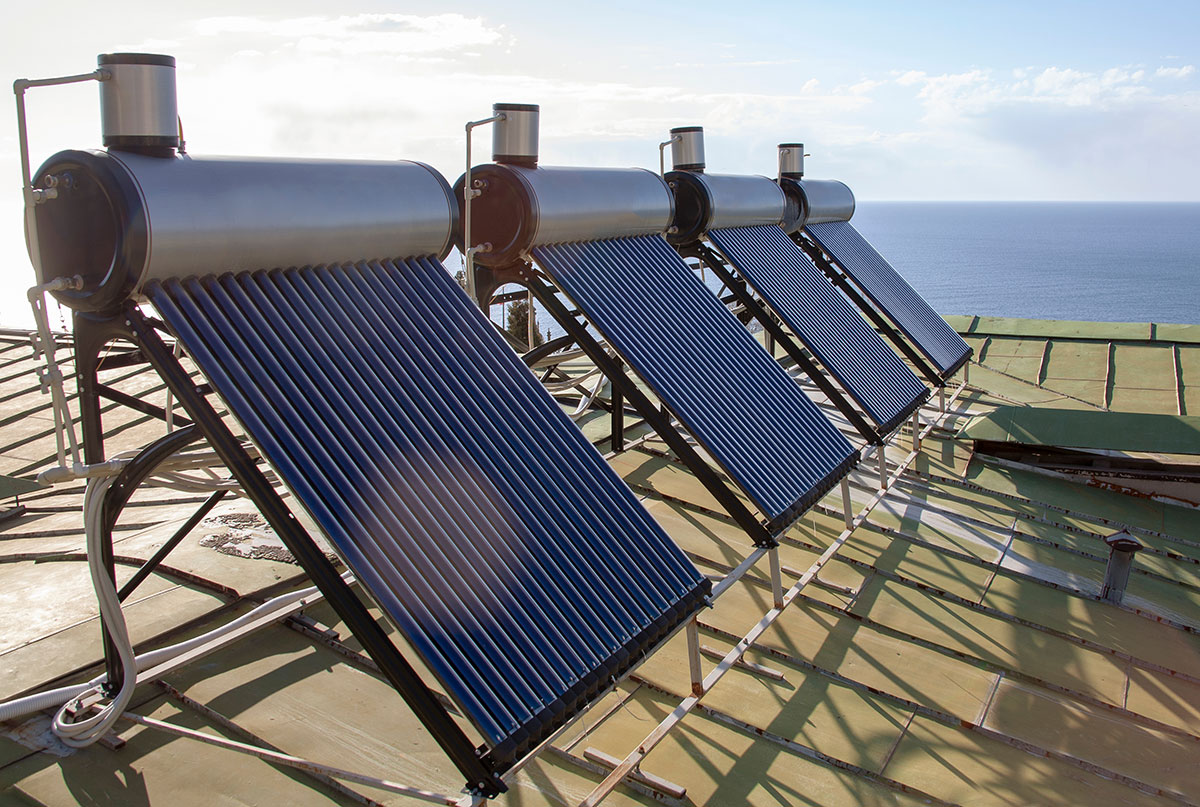
Pros
- Cheaper – Solar thermal systems are generally cheaper to purchase and install compared with solar PV panels, as the technology has been more commonly used for a longer period of time.
- Easy Installation – Solar thermals systems need to be connected to your home’s hot water cylinder, but that is it. The installation is usually relatively simple for the vast majority of homes.
- More Efficient – Solar thermal panels are more efficient at converting sunlight into energy for their intended use than photovoltaic panels.
- Lower Heating Bills – A solar thermal system can save a lot of money on your heating bills by producing more than half of your hot water needs without the use of a boiler.
- Reduced Carbon Emissions – The majority of central heating systems in Irish homes still use oil for hot water and home heating. Solar thermal panels can produce up to 60% of your hot water needs, cutting down on emissions from burning oil.
Cons
- Restricted Use – Unlike solar PV, which is multi functional for any systems that run on electricity, solar thermal collectors have only one usage, making hot water.
- Intermittent Generation – Solar thermal collectors are heavily reliant on having continuous direct sunlight for heating. This can be a problem in the Irish climate, limiting their usage.
Grant Support for Solar Systems
There are grant supports available to help manage the cost of both solar PV panels and solar thermal collectors. However, the number of grant sources and amounts available vary greatly between the two technologies.
The SEAI is the primary provider of grant funding for renewable energy technologies, and has grants available for both solar PV and solar thermal systems.
With solar thermal, the only grant amount available is €1,200, this can be a considerable chunk of the cost, but is still lower and less flexible than solar PV grants.
Critically, In order to qualify for the grant the solar thermal system must deliver a certain threshold of renewable energy per square metre of floor space in your home. Therefore, if you have a larger home, or get less sunlight, more solar thermal panels will be needed in order to receive the grant, diminishing its value.
The SEAI grants for homeowners to install solar PV panels maxes out at €2,100, but also has flexibility in that it scales with the size of the solar system you are installing.
For businesses, the Non-Domestic Microgen Grant Scheme has been supercharged this year to offer up to €162,600 in funding for businesses to install solar PV systems up to 1MWp in size.
Both solar PV and solar thermal can avail of the Accelerated Capital Allowance tax relief scheme. But there are other grants such as the Solar Capital Investment Scheme for farmers, for which only solar PV qualifies.
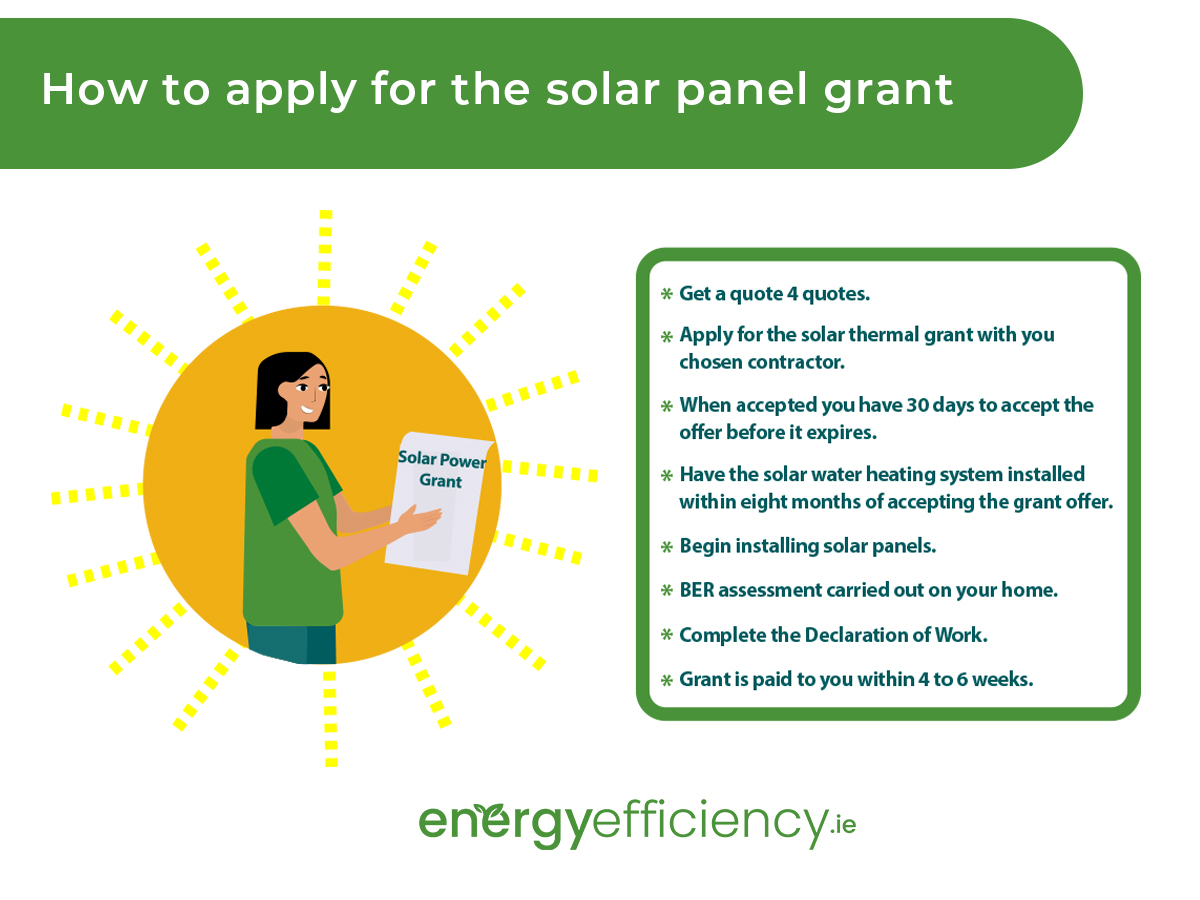
So Which to Choose
Having any solar system installed on your home or business is a significant long term investment, and with the long view in mind, solar PV is simply a better choice in terms of its versatility, and the degree to which it can save you money.
Solar PV vs Solar Thermal
Published: September 25, 2023
Last updated: October 9, 2025

Written by: Briain Kelly
Reading time: 5mins
There are two main types of solar power systems which you can install on your property, solar photovoltaic (PV) panels, or solar thermal collectors.
These provide different types of energy for your home, come at different costs, and will net you different savings over time. So which then is the best option for someone looking at getting a solar system installed today.
Well, let’s start by looking at what the two different types of technology are for.

Solar PV Panels
Solar Photovoltaic Panels convert sunlight into electricity. The panels are made up of photovoltaic cells of a material, usually crystal, which converts photons into electricity through the photovoltaic effect.
The electric current generated by solar panels is in the form of direct current (DC), which has to be converted into alternating current (AC) before it can be used in your home. This is done by an Inverter, either at the end of the string of panels wired together, or via microinverters attached to each individual panel.
Elements in a solar PV system can include:
- Solar Panels- The photovoltaic panels which generate electric current from sunlight, the most important part of the array.
- Inverter – Which changes the DC electricity generated by your solar panels to AC which is usable in household appliances.
- Battery – An optional extra for storing excess electricity created by your panels at peak output, so that it can be used later.
- Charge Controller – Regulates the flow of electricity from solar panels to the battery so as to prevent overcharging.
- Power Diverter – Sends surplus electricity from your solar panels to the immersion in order to produce hot water.
- Monitoring System – A sensor array and display system that lets you monitor the output and health of your solar panels.
Solar Thermal Collectors
Solar thermal collectors trap heat from sunlight, and then channel that heat to a hot water cylinder. This is in contrast with burning fossil fuels such as oil or gas to heat a boiler.
The solar collectors absorb sunlight, which is then used to heat water or a heat transfer fluid, and bring that down to your hot water cylinder for it to be used.
There are two main types of technology used for solar thermal systems: Flat Plate Collectors and Evacuated Tube Collectors.

Flat Plate Collectors
Panels of black metal encased in a frame, and with a plastic of glass cover over them, and surrounded by insulation to reduce heat loss.
Either water or a heat transfer fluid is circulated through pipes underneath the metal plate and down to the hot water tank.
Evacuated Tube Collectors
Evacuated tube solar panels consist of glass tubes which have had the air evacuated from them to minimise the loss of heat. Inside of this is a metal pipe with an aluminium fin known as the absorber, which absorbs and transfers the heat into the fluid contained within the inner pipe.
The heat transfer fluid is then circulated to your hot water storage tank, where it heats the water via a coil.
Of these two types, Evacuated Tube Collectors are about 30% more efficient, so they take up less space on your roof. They are also considerably lighter than Flat Plate Collectors.
Which Should I Get
There are a multitude of pros and cons for the two different systems to weigh up when making your choice between solar PV and solar thermal.
Solar PV

Pros
- More Versatile – Solar PV panels which produce electricity are capable of far more cost saving functions than solar thermal. They cut down on your direct electricity usage, and can be used to charge electric vehicles. Solar PV can also be used to produce hot water if you have a power diverter to your immersion.
- Reduced Electricity Bills – Having a solar PV system installed on your property can dramatically cut down the cost of your electricity bills by making free power from the sun.
- Long Lasting – Solar PV panels can last for decades, potentially continuing to produce considerable amounts of electricity after their official lifespan of 25 – 30 years. The payback period for the cost of the panels is in the region of 7 – 10 years, leaving you with decades of free electricity afterwards.
- Longer Warranty – While both types of system have official estimated lifespans of 25 – 30 years, solar PV panels tend to have far longer warranty periods, usually 25 years, than solar thermal panels’ 5-10 years. This means you are protected from the losses incurred by potential damage for a longer period.
- Grant Support – There are a wide array of grants available to help homeowners, businesses, farms, industry, and many other categories of buildings with the cost of installing solar PV panels.
- Surplus Electricity Tariff – People who have solar PV panels installed on their homes can now sell any excess electricity produced by their solar panels during peak output back to the grid. This can further reduce the payback period of the system, and make you a bit of money once they have been cleared.
Cons
- Expense – Having solar PV panels installed can be an expensive up front investment, usually more so than for solar thermal. Additional elements such as the Inverter, a power diverter, or solar battery can also add to the cost of the system.
- More Complicated – Solar PV systems are more complicated than solar thermal, with more components and the need to be wired into your house. This increases the scope of things that could break, and the expense of any repairs that crop up.
- Space Required – A solar PV system can take up a lot of space on your roof. Some homeowners might find this aesthetically unappealing. Alternatively, depending on the shape of your roof it might not be suited for solar panels.
Solar Thermal Collectors

Pros
- Cheaper – Solar thermal systems are generally cheaper to purchase and install compared with solar PV panels, as the technology has been more commonly used for a longer period of time.
- Easy Installation – Solar thermals systems need to be connected to your home’s hot water cylinder, but that is it. The installation is usually relatively simple for the vast majority of homes.
- More Efficient – Solar thermal panels are more efficient at converting sunlight into energy for their intended use than photovoltaic panels.
- Lower Heating Bills – A solar thermal system can save a lot of money on your heating bills by producing more than half of your hot water needs without the use of a boiler.
- Reduced Carbon Emissions – The majority of central heating systems in Irish homes still use oil for hot water and home heating. Solar thermal panels can produce up to 60% of your hot water needs, cutting down on emissions from burning oil.
Cons
- Restricted Use – Unlike solar PV, which is multi functional for any systems that run on electricity, solar thermal collectors have only one usage, making hot water.
- Intermittent Generation – Solar thermal collectors are heavily reliant on having continuous direct sunlight for heating. This can be a problem in the Irish climate, limiting their usage.
Grant Support for Solar Systems
There are grant supports available to help manage the cost of both solar PV panels and solar thermal collectors. However, the number of grant sources and amounts available vary greatly between the two technologies.
The SEAI is the primary provider of grant funding for renewable energy technologies, and has grants available for both solar PV and solar thermal systems.
With solar thermal, the only grant amount available is €1,200, this can be a considerable chunk of the cost, but is still lower and less flexible than solar PV grants.
Critically, In order to qualify for the grant the solar thermal system must deliver a certain threshold of renewable energy per square metre of floor space in your home. Therefore, if you have a larger home, or get less sunlight, more solar thermal panels will be needed in order to receive the grant, diminishing its value.
The SEAI grants for homeowners to install solar PV panels maxes out at €2,100, but also has flexibility in that it scales with the size of the solar system you are installing.
For businesses, the Non-Domestic Microgen Grant Scheme has been supercharged this year to offer up to €162,600 in funding for businesses to install solar PV systems up to 1MWp in size.
Both solar PV and solar thermal can avail of the Accelerated Capital Allowance tax relief scheme. But there are other grants such as the Solar Capital Investment Scheme for farmers, for which only solar PV qualifies.

So Which to Choose
Having any solar system installed on your home or business is a significant long term investment, and with the long view in mind, solar PV is simply a better choice in terms of its versatility, and the degree to which it can save you money.
Solar Energy Saves Households Thousands in Electricity Costs
Take our 2-minute questionnaire and find affordable solar options to suit your budget and lifestyle.



